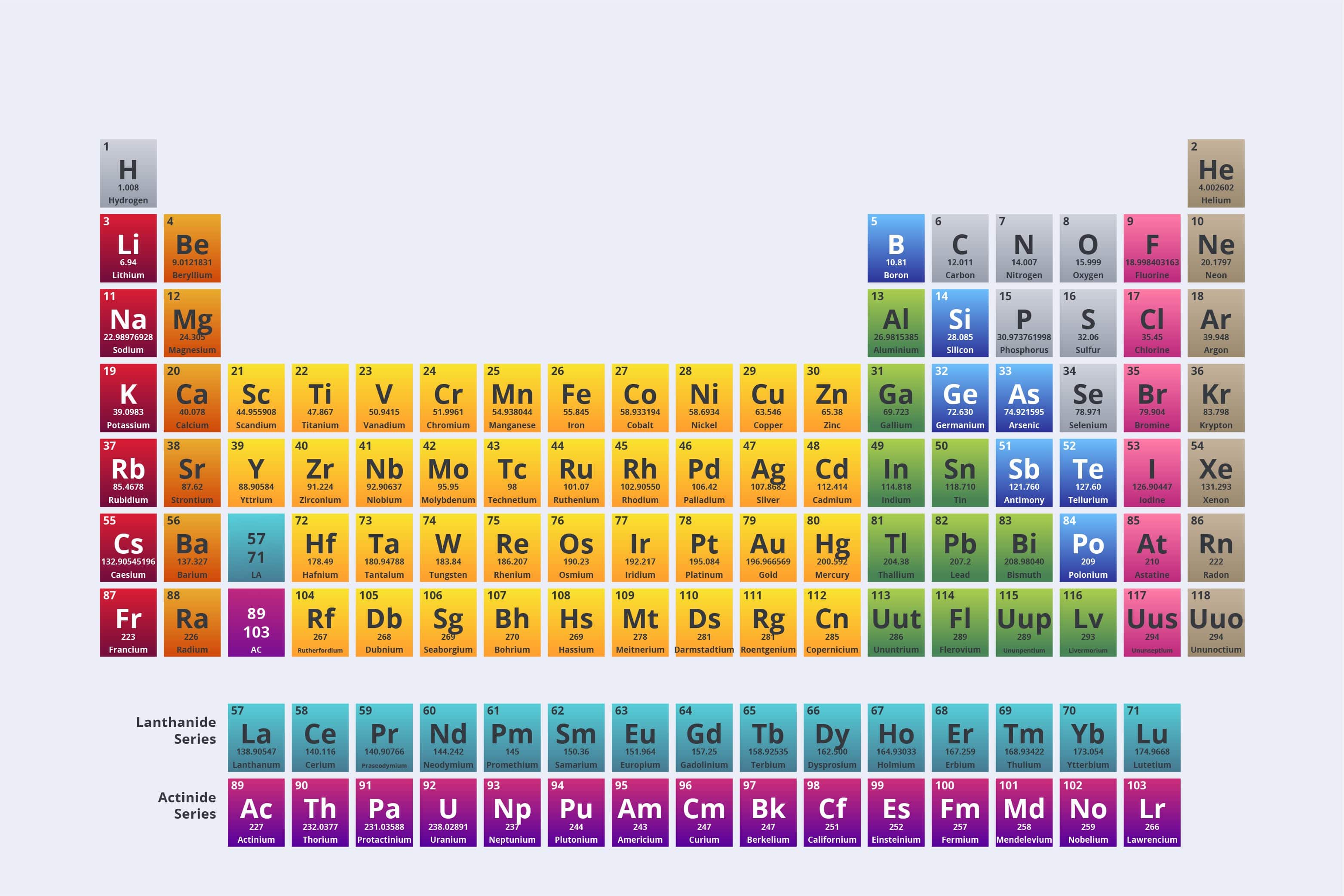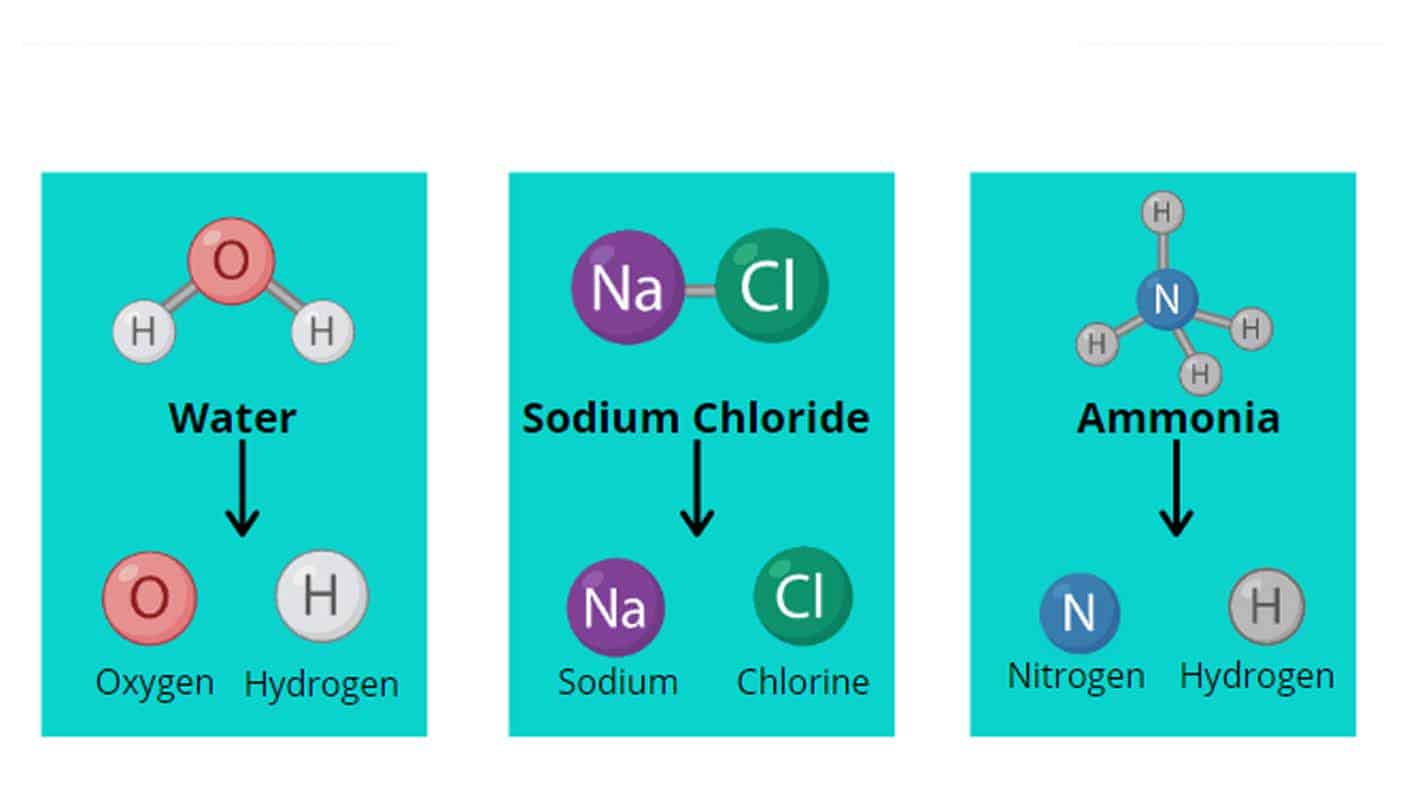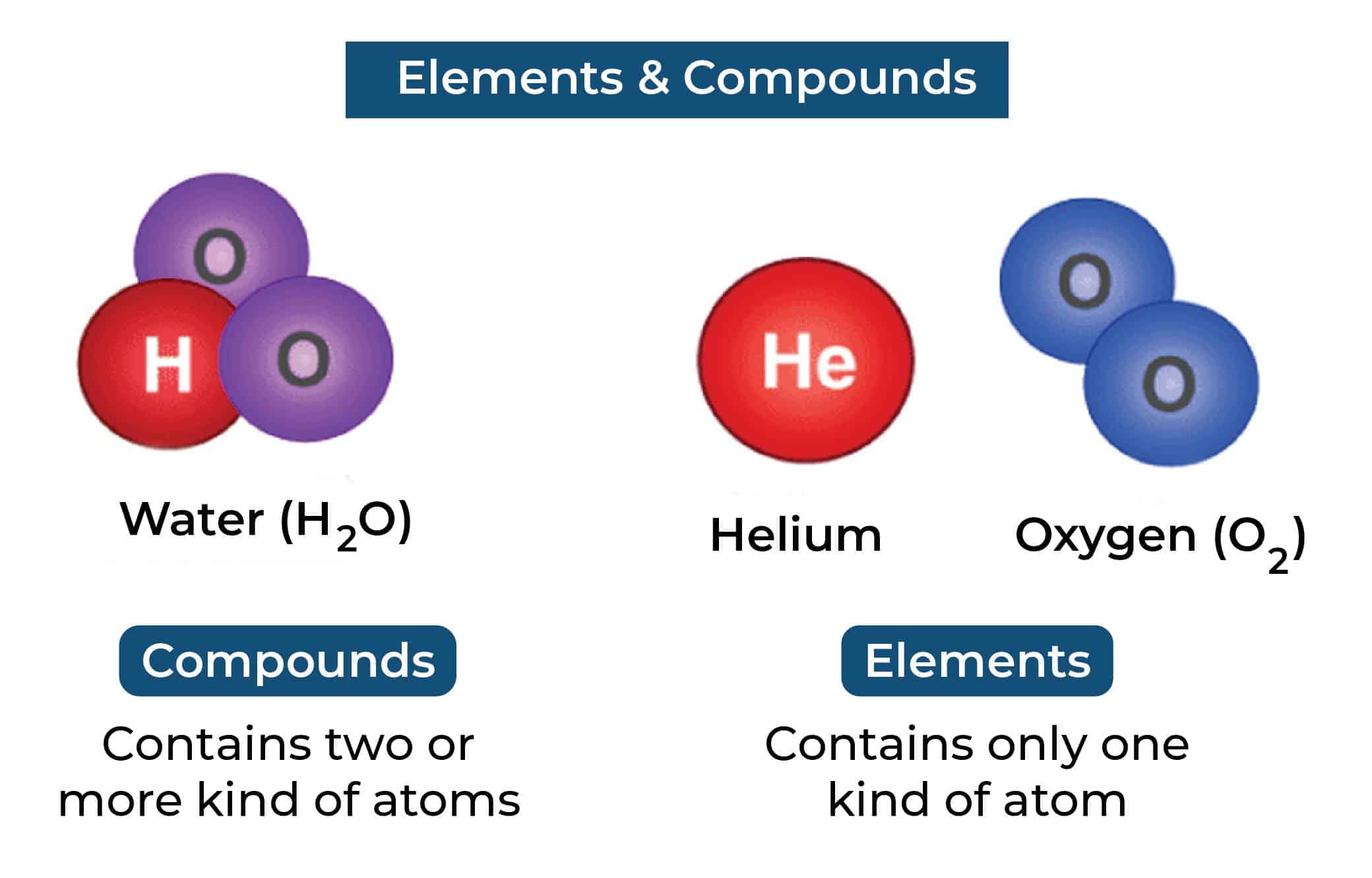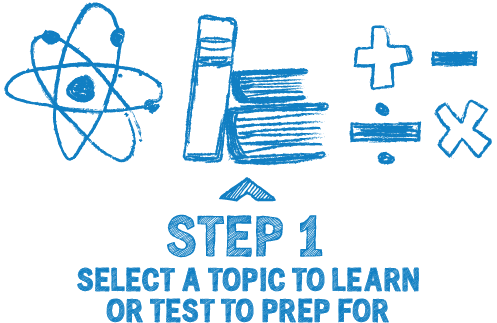Elements and Compounds
Grade 7 Science Worksheets
Elements are the basic building blocks of matter. They are substances that cannot be broken down into simpler substances by chemical means.
Table of Contents:
- What are elements?
- What are Compounds?
- Difference between Elements and Compounds
- FAQs
Elements and Compounds - Grade 7 Science Worksheet PDF
This is a free printable / downloadable PDF worksheet with practice problems and answers. You can also work on it online.
|
Untimed | |
Sign up with your email ID to access this free worksheet.
"We really love eTutorWorld!"
"We really love etutorworld!. Anand S and Pooja are excellent math teachers and are quick to respond with requests to tutor on any math topic!" - Kieran Y (via TrustSpot.io)
"My daughter gets distracted easily"
"My daughter gets distracted very easily and Ms. Medini and other teachers were patient with her and redirected her back to the courses.
With the help of Etutorworld, my daughter has been now selected in the Gifted and Talented Program for the school district"
- Nivea Sharma (via TrustSpot.io)
What are Elements?
Each element is made up of only one type of atom, or as molecule of similar atoms.
For example, the element carbon is made up of only carbon atoms, which have 6 protons, 6 neutrons and 6 electrons. The element oxygen is made up of only oxygen atoms, which have 8 protons, 8 neutrons, and 8 electrons.
Each element has a unique set of properties, such as density, melting point, and boiling point, that make it different from other elements.

There are over 100 known elements, and they are arranged on the periodic table, a chart that organizes the elements according to their properties and atomic structure.
The elements on the periodic table are grouped into families, and each family has similar characteristics like the halogen family or the carbon family.
It is important to note that elements can combine to form compounds, a substance made up of two or more elements chemically bonded together. But compounds can be broken down into their original elements by chemical means.
What are Compounds?
A compound is a substance made up of two or more different elements that are chemically bonded together. The individual elements lose their original properties and form a new substance with its own unique properties.
Each compound has a unique chemical formula, which is a combination of the symbols of the elements that make it up.

For example, water is a compound made up of hydrogen and oxygen. Its chemical formula is H2O, which tells us that there are 2 atoms of hydrogen and 1 atom of oxygen in a molecule of water.
Salt is another example of a compound, it’s made up of sodium and chlorine and its chemical formula is NaCl.
It’s important to note that compounds can be broken down into their original elements by chemical means, such as through chemical reactions or using acids. They can’t be separated by simple physical means, such as filtration or centrifugation.
“There have been times when we booked them last minute, but the teachers have been extremely well-prepared and the help desk at etutorworld is very prompt.
Our kid is doing much better with a higher score.”
7th Grade Tutoring
eTutorWorld offers Personalized Online Tutoring for Math, Science, English, and Standardised Tests.
Our Tutoring Packs start at just under $21 per hour, and come with a moneyback guarantee.
Schedule a FREE Trial Session, and experience quality tutoring for yourself. (No credit card required.)
Difference between Elements and Compounds
Elements and compounds are two types of matter that are made up of different things.
Elements are the basic building blocks of matter, they are substances that cannot be broken down into simpler substances by chemical means.
Each element is made up of only one type of atom, and each atom has a unique number of protons, neutrons, and electrons. Examples of elements include oxygen, carbon, gold, and iron.
Compounds, on the other hand, are made up of two or more different elements that are chemically bonded together. The individual elements lose their original properties and form a new substance with its own unique properties.
Each compound has a unique chemical formula, which is a combination of the symbols of the elements that make it up. Examples of compounds include water (H2O), salt (NaCl), and carbon dioxide (CO2).

An easy way to remember the difference is that elements are like Legos, they are the basic building blocks, while compounds are like structures made of those legos, they have their unique properties, but can be taken apart and rearranged.
It’s also important to note that compounds can be broken down into their original elements by chemical means, such as through chemical reactions or using acids, while elements can’t be broken down into simpler substances.
Do You Stack Up Against the Best?
If you have 30 minutes, try our free diagnostics test and assess your skills.
Elements and Compounds FAQS
What are elements?
Elements are the basic building blocks of matter. They are substances that cannot be broken down into simpler substances by chemical means. Each element is made up of only one type of atom and has unique properties.
How are elements arranged on the periodic table?
Elements are arranged on the periodic table according to their properties and atomic structure. They are grouped into families and each family has similar characteristics.
What is a compound?
A compound is a substance made up of two or more different elements that are chemically bonded together. The individual elements lose their original properties and form a new substance with its own unique properties.
How can we tell the difference between an element and a compound?
Elements are made up of only one type of atom, while compounds are made up of two or more different elements that are chemically bonded together. Elements have unique properties, while compounds have different properties than their individual elements.
How can compounds be broken down?
Compounds can be broken down into their original elements by chemical means, such as through chemical reactions or using acids. They can’t be separated by simple physical means, such as filtration or centrifugation.
Can elements be broken down into simpler substances?
No, elements are the basic building blocks of matter and cannot be broken down into simpler substances by chemical means.

Kathleen Currence is one of the founders of eTutorWorld. Previously a middle school principal in Kansas City School District, she has an MA in Education from the University of Dayton, Ohio. She is a prolific writer, and likes to explain Science topics in student-friendly language. LinkedIn Profile
Affordable Tutoring Now Starts at Just $22.49
eTutorWorld offers affordable one-on-one live tutoring over the web for Grades K-12. We are also a leading provider of Test Prep help for Standardized Tests (SCAT, CogAT, MAP, SSAT, SAT, ACT, ISEE, and AP).
What makes eTutorWorld stand apart are: flexibility in lesson scheduling, quality of hand-picked tutors, assignment of tutors based on academic counseling and diagnostic tests of each student, and our 100% money-back guarantee.
Whether you have never tried personalized online tutoring before or are looking for better tutors and flexibility at an affordable price point, schedule a FREE TRIAL Session with us today.
*There is no purchase obligation or credit card requirement
Grade 7 Science Worksheets
- Elements and Compounds
- Solar Energy
- Photosynthesis
- Electricity and Magnetism
- Law of conservation of energy
- Periodic table
- Properties of Matter
- Waves
- Energy Resources
- Weather and Climate
- Immune, Circulatory and Digestive Systems
- Organs in Multi-cellular Organism
- Sedimentary, Igneous, and Metamorphic Rocks
- Structure of the Earth
- Law of Conservation of Mass
- Physical and Chemical Changes
- Scientific Method
- Human Digestive System
- Environmental Science
- Renewable and Non-renewable energy Resources
- Characteristics of Living Organisms
- Life Science
- Earth and Space Science
- Solar Eclipse
- Heat Technology
- Newton’s Laws of Motions
- Physical Science
- Tools, Measurement and SI Units
- Earth Atmosphere
- Interactions of Living things
- The Earth Ecosystem
- Organelles in Plant and Animal cells
- Layers of the Earth
- Cycles in Nature
Grade 7 Math Worksheets
- Fractions
- Linear equations word problems
- Statistics
- Properties of Parallel Line
- Finding slope from an equation
- Identifying Quadrilaterals
- Percent Change
- Properties of addition and multiplication
- Pythagorean Theorem
- Solving two step inequalities
- Symmetry
- Fractions to Decimals (New)
- Whole Number Exponents with Integer Bases (New)
- Adding and Subtracting Fractions (New)
- Integer Addition and Subtraction (New)
- Dividing Mixed Numbers (New)
- Basics of Coordinate Geometry (New)
IN THE NEWS

Our mission is to provide high quality online tutoring services, using state of the art Internet technology, to school students worldwide.
Online test prep and practice
SCAT
SSAT
ISEE
PSAT
SAT
ACT
AP Exam
Science Tutoring
Physics Tutoring
Chemistry Tutoring
Biology Tutoring
Math Tutoring
Pre-Algebra Tutoring
Algebra Tutoring
Pre Calculus Tutoring
Calculus Tutoring
Geometry Tutoring
Trigonometry Tutoring
Statistics Tutoring
Quick links
Free Worksheets
Fact sheet
Sales Partner Opportunities
Parents
Passive Fundraising
Virtual Fundraising
Our Expert Tutors
Safe and Secure Tutoring
Interactive Online Tutoring
After School Tutoring
Elementary School Tutoring
Middle School Tutoring
High School Tutoring
Home Work Help
Math Tutors New York City
Press
©2022 eTutorWorld Terms of use Privacy Policy Site by Little Red Bird
©2022 eTutorWorld
Terms of use
Privacy Policy
Site by Little Red Bird










